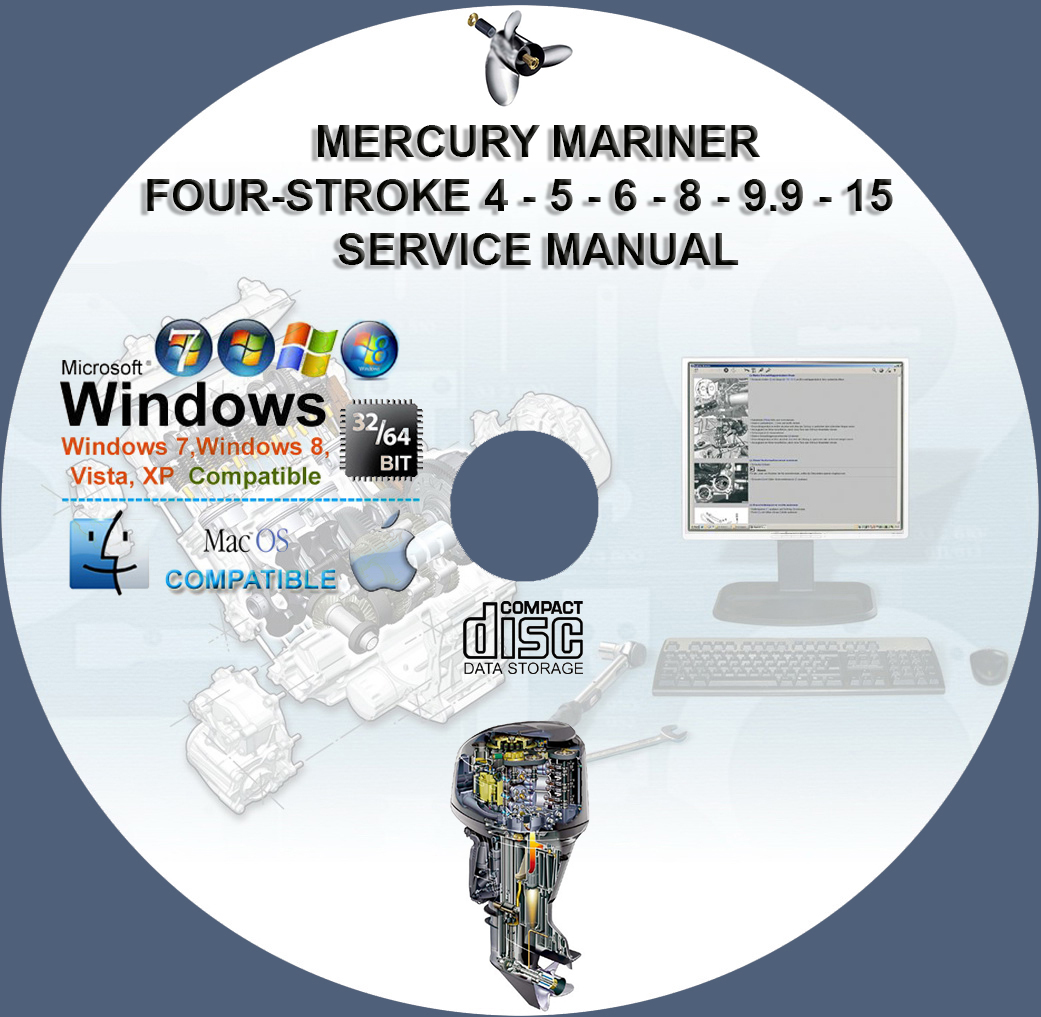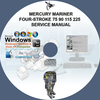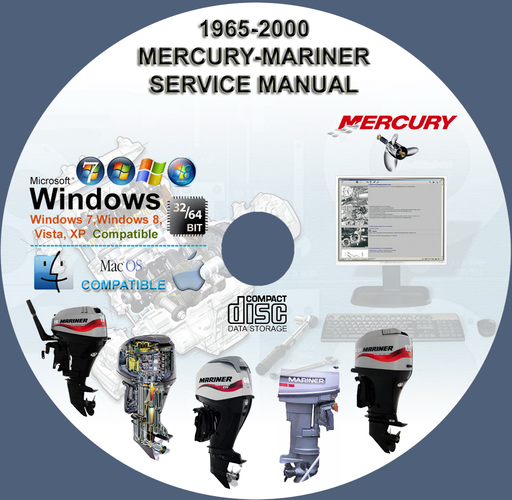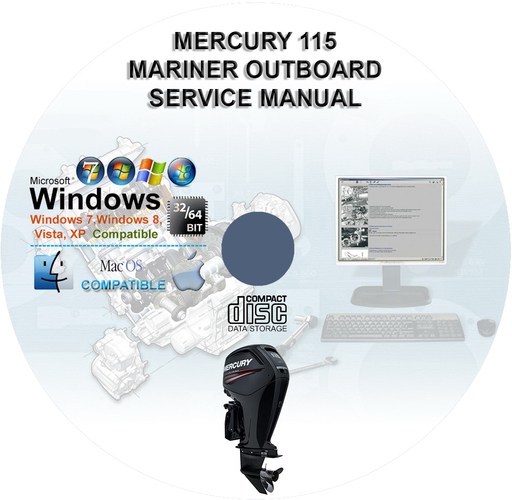Mercury Four stroke 4 5 6 8 9.9 15 Mariner Factory Service Repair Manual + Wirings
$39.00 – $48.00Price range: $39.00 through $48.00
Mercury Four stroke 4 5 6 8 9.9 15 Mariner Factory Service Repair Manual + Wirings
You can download this or I can ship it to you.
Loaded with Hi Resolution illustrations, instructions, photos, and diagrams, complete to service and repair your MERCURY.
Thousands of Pages
Mercury Four stroke 4 5 6 8 9.9 15 Mariner Factory Service Repair Manual + Wirings
Loaded with illustrations, instructions, photos, and diagrams, complete to service and repair your Mercury.
Thousands of Pages
Models Covered :
- 4 Serial Number Starting: 0R000001
- 5 Serial Number Starting: 0R000001
- 6 Serial Number Starting: 0R000001
- 8 Serial Number Starting: 0H000058
- 9 Serial Number Starting: 0H000058
- 9/15 (323 cc) Serial Number Starting: 0G590000
- 9/15 Bigfoot (323 cc) Serial Number Starting: 0G590000
Manual Covers :
Information:
- Specifications
- Maintenance
- General Information
- Outboard Installation
Electrical:
- Ignition
- Charging and Starting System
- Timing, Synchronizing and Adjusting
- Wiring Diagrams
Fuel System:
- Fuel Pump
- Carburetor
- Emissions
Powerhead:
Mid-Section:
- Clamp/Swivel Brackets and Drive Shaft Housing
- Power Trim
Power Unit:
Attachments/Control Linkage
Manual Starter
This manual is the same as the manual used by workshops. Service Manual contains detailed instructions and step by step diagrams for all workshop procedures.
Language: English
Format: PDF – Indexed and Searchable
COMPATIBLE WITH ALL WINDOWS & MAC COMPUTERS
(WINDOWS 11, WINDOWS 10, WINDOWS 8 ETC.)
Windows/Mac/Tablet/Phone Friendly
- Mercury 4 hp: Featured a built-in 0.3-gallon fuel tank and six trim positions, plus a shallow-water drive.
- Mercury 5 hp: A single-cylinder engine that offered more power, but was still lightweight. It often included both an integrated fuel tank and an external fuel tank connection.
- Mercury 6 hp: A single-cylinder, carbureted engine with a larger 123cc displacement (on many models) than the 5 hp, providing slightly more power.
- Mercury 8 hp: An 84-pound, twin-cylinder engine that offered CDI ignition with electronic spark advance and a multifunction tiller handle.
- Mercury 9.9 hp: A slightly more powerful, two-cylinder version of the 8 hp. Early four-stroke models in this range were carbureted, while later versions (post-2005) received EFI.
- Mercury 15 hp: The most powerful of the portable line, this two-cylinder engine was also available in carbureted versions and later featured EFI for better starting and performance.
- Quiet, smoke-free operation.
- CARB three-star, ultra-low emissions ratings (on later models).
- Electronic CD ignition for easy starts.
- Transition to four-stroke: During this period, Mercury phased out most of its two-stroke portable engines and transitioned to the more fuel-efficient and environmentally friendly four-stroke technology.
- Improved features: Later models saw refinements in design for easier carrying, better fuel efficiency, and cleaner emissions.
- Propeller options: The larger 8–15 hp models often offered different propellers to optimize performance for either speed or thrust.
- EFI Introduction: After 2005, Mercury began to offer EFI on many of its small four-stroke models, starting with the 9.9 hp and 15 hp versions.
| Medium | USB Flash Drive, DVD, Download |
|---|
Related products
Watercrafts/Boats
Watercrafts/Boats
MERCURY MARINER OUTBOARD 1965 – 1989 ALL MODELS FACTORY SERVICE REPAIR WORKSHOP MANUAL 2-300HP
Watercrafts/Boats
Watercrafts/Boats
MERCURY MARINER OUTBOARD 1965 – 2000 ALL MODELS FACTORY SERVICE REPAIR WORKSHOP MANUAL
Johnson Evinrude







